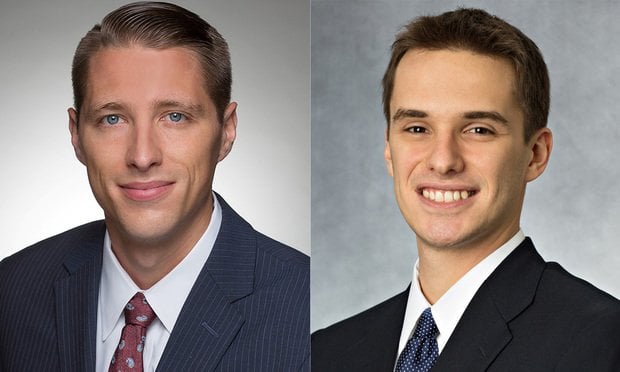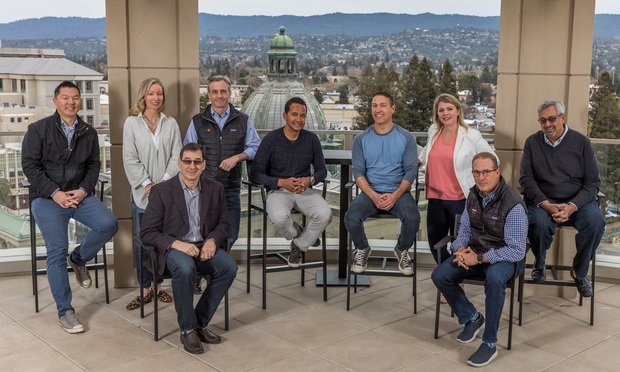This is an HTML version of a story that ran in the May issue of Real Estate Forum. To see the article in its original format, click here.
It's 2013, and many commercial real estate firms are picking themselves up, dusting themselves off and starting all over again in the wake of the Great Recession. But not these firms—the ones that have been actively and methodically growing for the past few years: expanding their reach, adding service lines and sweeping up talent like nobody's business. What makes them so confident in an era of caution that so naturally follows a major economic downturn?
“When Mark Rose came on board, he and the board set out a strategic plan to cover and provide what we call a 2x5x4 service in the primary and then secondary markets throughout the US,” says Chris Cooper, Los Angeles-based principal and managing director of Avison Young, a Toronto-based firm that has taken the Western US in particular by storm, adding offices and executive personnel in key markets.
Cooper explains that the “2” is two types of clients—occupiers and investors; “5” is the number of primary service lines—management, brokerage, capital markets, consulting services and project management; and “4” is the types of real estate—office, industrial, retail and multifamily. “We are very bullish on growth and opportunity in the US, and as a Canadian company, we feel very bullish on future investment into the US by international investors.
“But there's a bigger reason why our investment is going up and our expansion is progressing rapidly,” Cooper adds. “We believe there is a gap in the type of firm and type of service that is being provided to real estate clients today. We are the only company that is entirely principally owned by its people. In other words, the people delivering the service are the same people who own the company. Other companies are owned by the public or a third party, and that creates challenges in terms of putting your organization and its culture and its people in alignment with what is in the clients' best interests. We feel that, because there is this neat gap to be filled, we are moving aggressively to fill it. Clients tell us this, the market tells us this and the brokers we're recruiting tell us this.”
The story's a little different for American Realty Capital, a firm that's been on the same course for many years, says Nick Schorsch, chairman and CEO. “It's like the 50-year-old actor who's an overnight success,” he jokes. “We've been doing the same thing since '08: we're steeped in best practices and durable income. Earn what you pay, pay what you earned, stay with less opportunistic asset classes in real estate and other types of investments, focus on high occupancy and high credit quality. It's all income based, so work at the higher end of the quality or the lower-risk side.”
Schorsch tells Real Estate Forum that part of the reason his firm has been growing successfully is that the economy has moved to where yield-based or durable-income products are at a premium because treasury, government yields and stock-and-bond yields have been declining for the past five or six years. “The market for our products is increasing. People need income and the protection of principal. We've looked at lowering fees and creating a more transparent product and without any legacy assets from the 2006-2007 vintage, and we had a really good running start on a good product line. It creates a massive leverage for us in the sense that we've delivered major liquidity events. We've made over $2.5 billion of profits from three full-cycle liquidity events. We've returned almost $8 billion to investors, and that helps demonstrate the value of these types of products.”
For integrated loan originator, mortgage banker and loan servicer Berkadia, hiring good producers and putting the tools into their hands to be productive have helped it grow its production or servicing portfolio, says CEO Hugh Frater: “A lot of time in recruiting, we're making sure we have the right product in place for mortgage bankers to hang their hats. We're trying to find ways to help customers as much as possible and have the right tools in the box. We hire good people in areas where there is activity.”
Being an outsource provider for other services has been another means for Berkadia's growth. “We've achieved a scale on servicing that's hard for others to match,” says Frater. “We've had 10 years of refining processes and finding ways to do things faster and better and cheaper. We've been the beneficiary of those who want to outsource services and want to turn fixed costs into variable costs. We're also a sub-servicer for other servicers who can't do things at the same cost as we can.”
Colliers International has added experienced SVPs in a variety of markets, expanding across geographies and property sectors. The philosophy behind the firm's recent growth has been client driven, says Doug Frye, the firm's global CEO. “We need to be able to provide the absolute best service across business lines and geography for our clients. It's truly a global economy now, and you need to be in a position to accelerate the success of your clients.”
Healthcare REIT Ventas Inc. has done more than $12 billion of acquisitions over roughly the past two years, and Lori Wittman, SVP in charge of capital markets and investor relations, says that for more than 10 years, the firm has had a very set strategy to grow, diversify its operators and increase its private-pay percentage. “We had one tenant in the government-reimbursement area, and we really set out to change that, to diversify our business. Now, over 80% of our revenues are all private pay. This gives us consistent returns no matter what the economic environment would be and, at the same time, mitigates risk.”
Wittman admits that most firms don't talk about mitigating risk while talking about growth and acquisitions, “but we really think we continue to do both. We've strengthened our balance sheet over time such that today we're over 30% levered. We have been able to achieve superior consistent returns and we've gotten several upgrades.” She adds that being well balanced in a sector with favorable demographics, and favorable policy thanks to healthcare reform, has been a boon to Ventas' growth.
Growth With a Plan
Perhaps what gives these firms longevity is that in the same breath that the principals are talking about growth, they're also talking about careful, controlled growth that makes sense. “We're careful with costs,” says Cooper. “We're making significant investments, but they're smart investments. We're constantly measuring our performance, and we are constantly talking to our clients and thinking of the old kaizen: continuous improvement. We don't have our blinders on.”
Schorsch maintains that his firm has simply stayed the course and didn't get distracted, which has led to successful growth. “We didn't do anything amazing,” he states. “We delivered 6% to 7% annual earned dividend and had high-teens returns. You do that for four years and give the investors back their money, and they get back 175 cents for every dollar invested, so that's the proof. We have the largest net-lease REIT and the largest REIT on NASDAQ—a year ago, it was $400 million of assets, and this has grown to $4 billion.”
In 2009, ARC raised $275 million. In 2010, that figure rose to $1.1 billion. In 2012, it grew to $3 billion. “So far this year, we've raised $3 billion, and we're only 96 days into the year,” says Schorsch. “We raised more in the first 3.5 months in 2013 than we raised last year, and that was double the previous year. We expect to raise $7 billion to $8 billion this year. We've also added employees at a strong growth rate.”
Scaling Back?
When asked if they could imagine a scenario in which they might consider scaling back rather than expanding, the principals expound on prudent philosophies. “If we believe our markets or clients don't support a certain geography or service line or strategy, we are a very nimble organization, and we would scale back,” says Cooper. “But we don't have to push the panic button like others do. We have patient money.”
Despite its remarkable growth pattern, Schorsch says ARC is “very cautious about growth. We are not planning growth. We need to be in a position where we can let the growth come organically. That's very important to our business philosophy. We try not to force growth because in our business it's not about growth of volume, it's about growth of process. We're focused on making our investors money—not about being the biggest company.”
Frater says his firm might pull back in a scenario where there is a sharp decrease in the amount of capital available for real estate activity, “but I don't really anticipate that. I do see the rate of growth slowing because prices in some markets are getting pretty high. But I don't see dramatic contraction of the market. Growth is slowing but not stopping.”
Frye says he tries not to imagine a scenario in which his firm might scale back. “We've never really gotten out over our skis. For that reason, we probably wouldn't be pulling back. If there's significant pullback in the global economy, or if the US economy stumbles or starts to fall a little bit, we may have to slow down our expectations, but for the most part I see good, solid growth from us for the foreseeable future.”
Room for More Growth
The principals do see areas in the economy where there are growth opportunities. Cooper, for one, sees a chance to attract young talent in fields where growth continues to skyrocket. “The tech, biotech and entertainment sectors are seeing tremendous growth,” says Cooper. “There's such a battle for talent right now, and that's why you see this expansion going on here in Southern California and certainly in Northern California, the Silicon Valley, San Francisco—wherever there's creative space: West L.A., Santa Monica, Playa Vista. As long as that business expands, the fight is going to be for this young talent coming out of college.”
As for attracting experienced talent, Cooper says sometimes you have to reach across the country to find executive talent for senior and middle management, which presents opportunities to create environments that will entice experienced talent. “That's why, when I talk about Downtown L.A. becoming this live/work/play environment, it's important because people from other regions are concerned about our traffic, and they're not used to commuting,” he says. “Can you create an environment where they can walk to work and afford to live?”
The most recent growth opportunities ARC has seen are from taking products from non-core, non-traded platforms to the public markets, says Schorsch. “Whether through listing, IPOs or selling assets, a liquidity event completes the circle. We're creating a capital event where the investor can prove performance and yield. It's no different from what's occurred in endowments and what's occurred in the fund world.”
Schorsch adds that he's seeing a resurgence of demand as more non-traded REITs look for liquidity. “There is $39 billion in non-traded REITs looking for liquidity. The non-traded space is growing.” Also, he says that investors have a lower yield expectation than they used to. “The markets are certainly recovering. The average American doesn't feel like the market's back. They're still feeling like it's a challenged economy.”
While he feels there are barriers to growth for smaller and mid-sized firms in terms of raising capital, Frye notes “there's always an opportunity for growth. There will always be some good niche firms within the industry, but the growth will be dictated more by the rise and fall in the economy.”
Wittman says Ventas continues to look at potential opportunities in the healthcare sector. “It's a very large market, and very fragmented,” she points out. “Less than 10% is owned by public REITs, and there are underlying factors that allow us to continue to grow. The industry is consolidating, and other changes present opportunities. We think the real estate will continue to flow to the logical owner, and that will be public REITs because the cost to own healthcare real estate is lower than for other sectors.”
© 2025 ALM Global, LLC, All Rights Reserved. Request academic re-use from www.copyright.com. All other uses, submit a request to [email protected]. For more information visit Asset & Logo Licensing.







